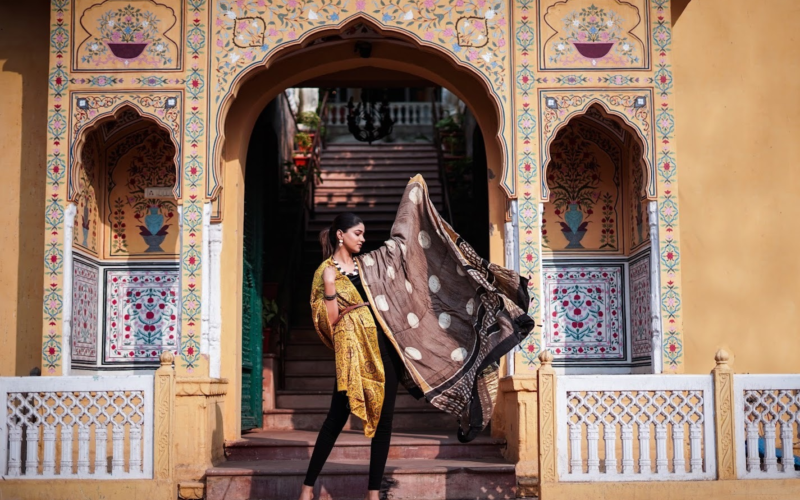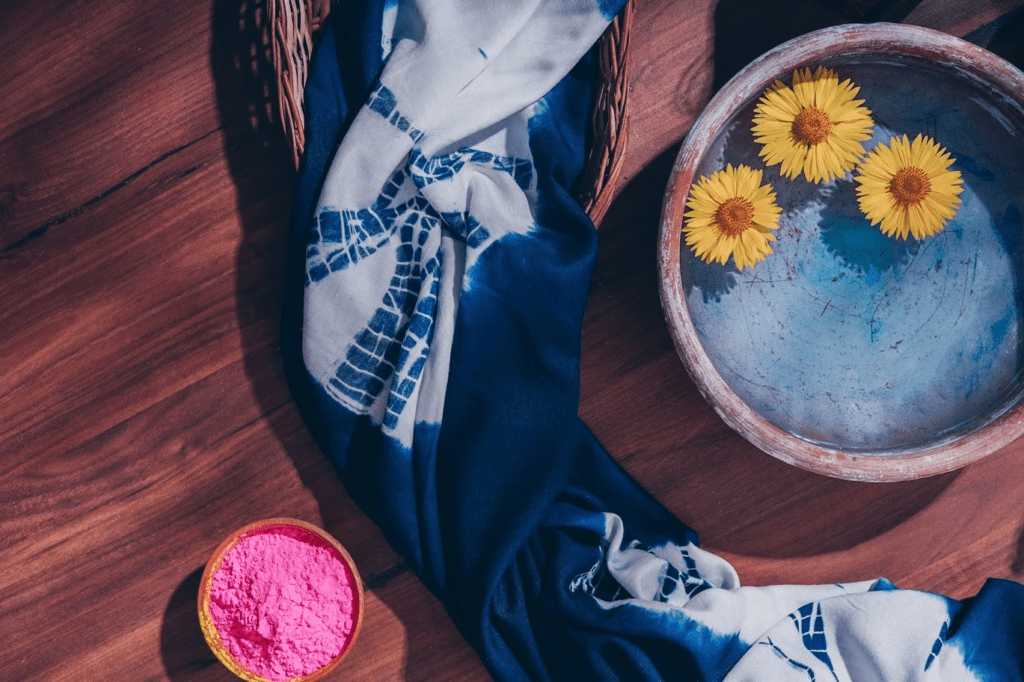
Fashion is a type of narrative through clothes, where individuals may show their creativity. Fashion is also about borrowing influence from the past. And the current fashion trend shows a huge retro — tie-dyeing.
From Hollywood superstars like Jennifer Lopez, Nicki Minaj, and Kendall Jenner to popular B-town celebs like Alia Bhatt and Katrina Kaif, everyone has been embracing this style of inspiration from the ’90s! But did you know remnants of the method stretch back to the 5th century AD? When experts researched the paintings of the Ajanta caves, they discovered figures gracing cloth processed with the tie-dye method!
This fabric-dyeing method came into prominence in the 90s owing to its strong, vibrant statements and saturated patterns. This feel-good craft never goes out of style. After all, tie-dyeing methods have long been simple to execute, affordable, and adaptable.
About Tie-Dye
Tie dye Print is a self-explanatory name, as all you need to do is tie and dye the cloth. There are many chances to explore various designs by attaching the cloth in different ways. The parts of the cloth that don’t get colored make different designs and patterns.
Anyone can make gorgeous and complicated patterns and motifs with no effort with this affordable and easy dying process.
Popular Tie-Dyeing Techniques With Folding Patterns
Tie-dye is a simple, DIY project where you need to know a few tricks to obtain the best effect. Here, you are going to learn a few tie-dyeing methods using folding patterns, such as the scrunching or crumpling operations. Here is the list of tie-dye methods you’ll learn below—
Shibori
It is claimed that shibori is the oldest ancient tie-dye form. This tie-dye method was first used in Japan in the eighth century. It involves a delicate way of folding cloth and securing it with clamps or rubber bands.
You may make an unlimited number of designs using this approach. From simple to complex patterns, and impressionistic lines to grids or half-dot and concentric circle designs, there are many ways to experiment.
Although you may design your shibori tie-dye garment with any shade, this method is inseparably associated with indigo blues. The reason for such a link is that genuine indigo coloring was readily accessible in Japan.
- Following the shibori process, you need to wrap the cloth around any material like rope, wood, or plastic tubes.
- Then, use thread, twine, or cable to bind the cloth to that specific item.
- Since the fabric’s area is covered behind the binding cord, it cannot be colored.
- When you put the dye on the rest of the garment, you get beautiful patterns on the surface of the fabric.
Spirals
When someone hears the phrase “tie-dye”, the first thing they think of is spirals. One may clearly associate these tie-dyeing methods with those “groovy” clothes from the late ’60s.
The most general type of tie-dye process is spiral. You need to twist your clothes into circles instead of neatly folding them. The outcome is a magnificent spiral pattern.
You need to squeeze a little part of your fabric midway using this approach. Then, retain hold of that portion when you need to twist the cloth clockwise.
- Tie the material with a few rubber bands, crisscrossing them over the middle. The reason is simple: the white spots stand out more when the material is tied more tightly.
- If you want to obtain a rainbow spiral design, apply a different hue of dye to each ‘wedge’ of the gridding patterns.
- You could move the spirals off-center and use fewer bands to connect them to make an asymmetrical pattern that is less resistant to dye.
Ombre/Dip-Dye
Here, you don’t have to worry about any form of folding of your clothes. Rather, you need to soak the cloth material in dye. Ombre or dip-dye is seen particularly in bigger, more dramatic fabrics, such as the living room drapes. This gorgeous and incredibly simple DIY tie-dye method may also be seen in throw blankets.
- As the name indicates, this entails “dipping” the cloth in the dye.
- If you let the fabric soak in the dye solution, the color will slowly work its way through the fabric.
- This tie-dyeing process provides the ombre appearance.
- You may repeat the technique with other hues of dye on the opposite end of the fabric to generate some diverse effects.

Stripe/Accordion
Stripe is also one of the most common tie-dyeing methods since you can frequently see shirts or tops split into distinct stripes colored different colors. Technically, stripes or accordion folds are a type of shibori, but what makes shibori different is the way it is done.
- The procedure includes the folding of the cloth into different patterns.
- The folding component should be followed by the pattern you wish to attempt on your cloth. It may feature horizontal stripes, vertical stripes, or diagonal stripes.
- Then, fold your cloth with thread or rubber bands to stop the spread of the color.
- This results in the white stripes on your fabric.
Bandhani/Bandhej
This old tie-dye Indian method symbolizes the legacy of the desert state of Rajasthan. Bandhani is full of the most vibrant colors, commonly found in sarees. Here, little sections of materials are connected into a focal point to create small-shaped designs.
The Indonesian variant of this method is designated as Plangi.
- In bandhani, you need to knot the cloth into tiny portions with impermeable thread in various designs and patterns.
- Make sure there will be a normal time between the ties.
- Then dye the cloth using solid colors. Since the colored sections don’t absorb the color, they stay white or in the garment’s natural hue. Thus, it generates the pattern or makes a motif.
Are you seeking the perfect platform for growing your fashion or textile brand or acquiring materials for your garment business or are you looking for Wholesale Fabric? Fabriclore might be the one-stop solution that you can look after from design to delivery. The collection is extensively designed for your requirements with customization needs along with bulk orders.





